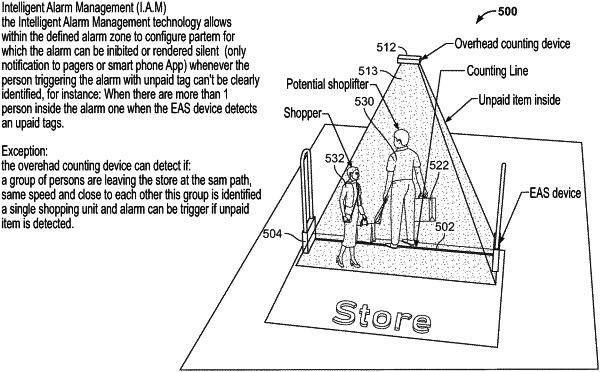| CPC G08B 13/248 (2013.01) [G06N 20/00 (2019.01); G06T 7/70 (2017.01); G06V 10/70 (2022.01); G06V 20/52 (2022.01); G06V 40/10 (2022.01); G08B 13/2417 (2013.01); G08B 25/008 (2013.01); G08B 29/186 (2013.01); G06T 2207/20081 (2013.01); G06T 2207/30196 (2013.01); G06T 2207/30232 (2013.01); G06T 2207/30242 (2013.01)] | 18 Claims |

|
1. An antitheft security system for a business establishment, said security system comprising:
at least one reader device operatively monitoring a coverage area for a signal from at least one security tag;
at least one directional people counter operatively detecting a direction in which a person is passing through a zone of entry, and operatively identifying an exit event representing the person leaving the zone of entry; and
a memory storing instructions and a processor coupled to the memory, the processor operatively executing the instructions to:
query, in response to the at least one directional people counter detecting the signal from the at least one security tag, a database for information associated with the at least one security tag;
associate a time stamp with the at least one security tag identifying when an assertive edge of a signal from the at least one security tag is detected; and
determine whether to generate an alarm based on the information in the database associated with the at least one security tag, the time stamp, the exit event, and a timing constraint condition, and wherein the processor operatively executes the instructions to perform a machine-learning training session that modifies at least one of the timing constraint, the information in the database, or parameters associated with identifying the exit event.
|